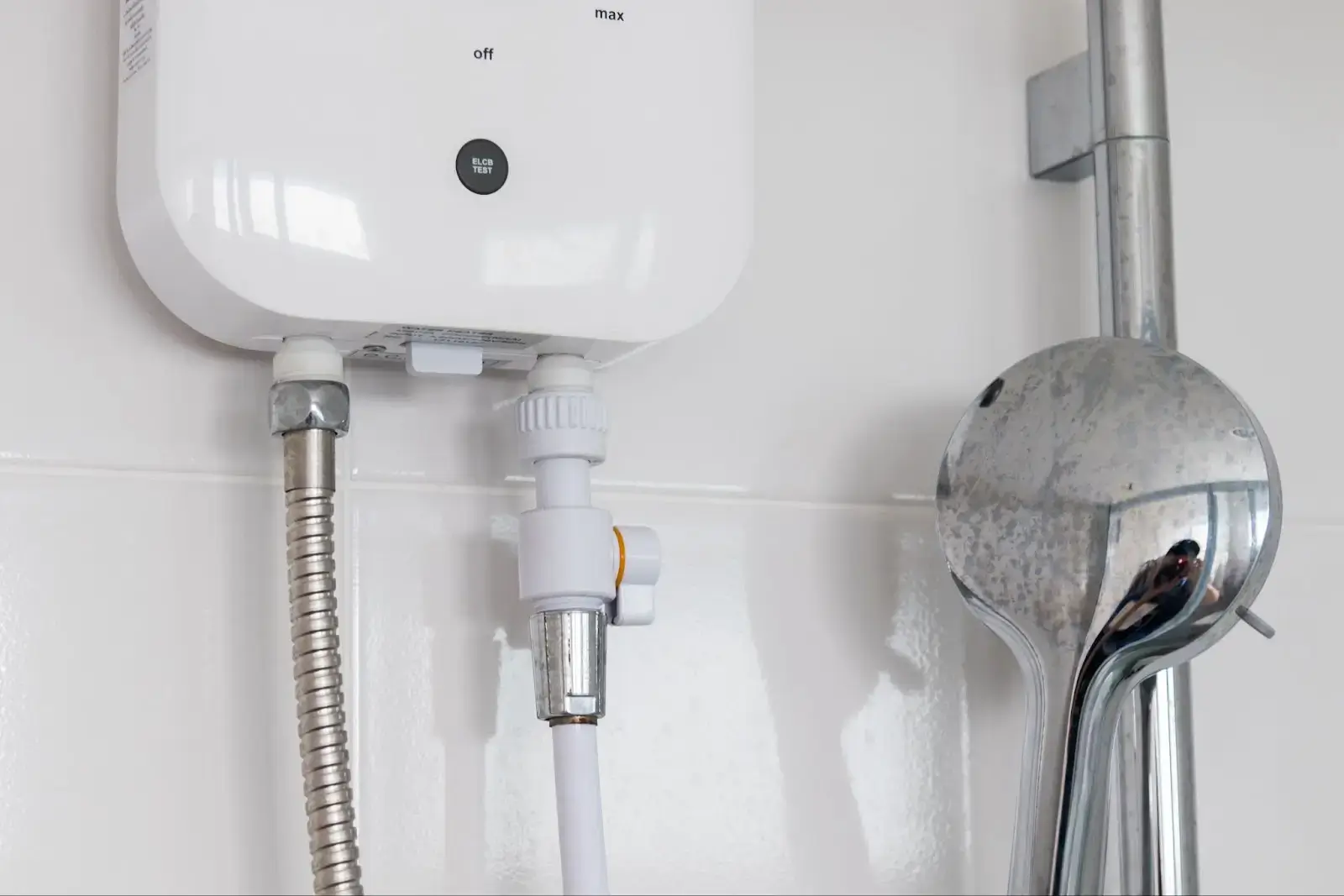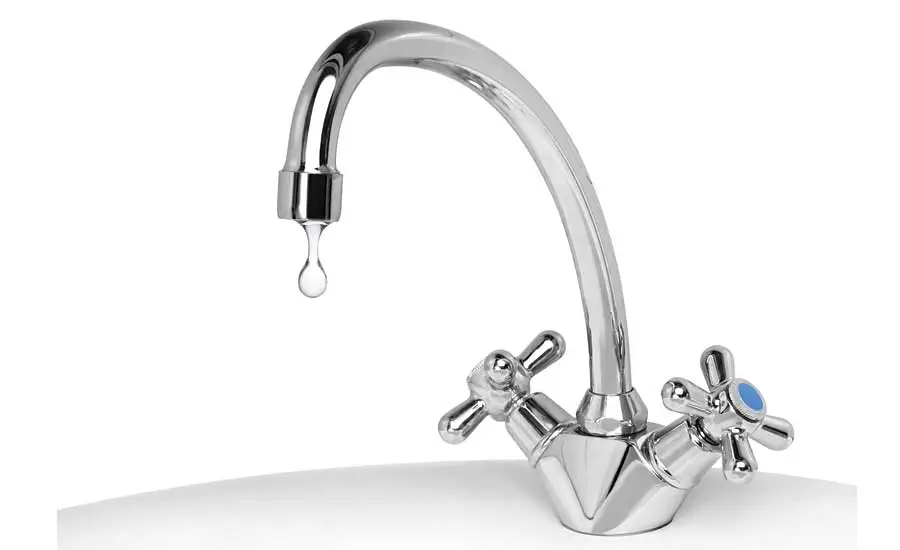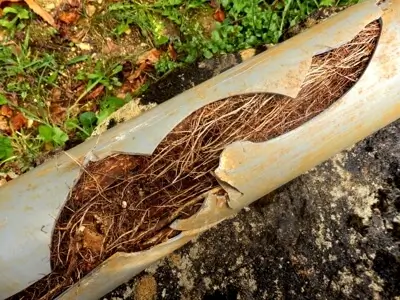You know that sinking feeling when you go to flush the toilet and the water starts rising instead of going down? Your heart drops as you realize something is very wrong with your sewer line. One of the most common culprits behind backed up drains and sewage nightmares? Invasive roots from trees and shrubs.
Those persistent little suckers are always searching for sources of moisture and nutrients to soak up. And unfortunately, your home's sewer pipes are basically an all-you-can-eat buffet just calling their name. Once roots manage to snake their way into a crack or pipe joint, it's curtains - they'll keep growing and expanding until they've created a total clog or even caused a pipe collapse.
Now you're stuck dealing with an expensive repair bill, potentially having to dig up part of your yard, and facing a disgusting mess to clean up. It's enough to make even the most avid gardener consider going scorched earth on every plant in sight. But before you grab the pruning shears, know that there are preventative measures you can take to keep roots out while preserving your beloved greenery.
Understanding the Problem
Okay, let's start by breaking down why tree roots pose such a persistent threat to sewer lines in the first place. It's basically a perfect storm of natural forces and our own human meddling.
The Thirsty Root Instinct
Trees are crafty little survivalists, with an insatiable hunger for any available sources of water and nutrients. Their roots will literally grow towards and latch onto anything that can sustain them - including the pipes running underground on your property.
Sewer lines are essentially a buffet line for these root appetites. They contain a constant flow of moisture-rich sewage and decaying organic matter - a veritable feast for any nearby roots. It's like ringing the dinner bell for every tree in a 100-yard radius.
The Leaky Pipe Vulnerability
Of course, tree roots can't just magically penetrate solid, unbroken pipes. They need an entry point first, which inevitably comes in the form of cracks, joint separations, or loose pipe connections in your sewer line.
Even the tiniest opening is an opportunity for persistent roots to start squeezing their way inside in search of that nutrient jackpot. Once in, they rapidly expand and create obstructions or pipe collapses as more roots are attracted to the party.
Our Human Helping Hand
As if the root issue wasn't bad enough, we humans have a weird tendency to make it even worse through our own misguided landscaping and construction practices. Some key offenders:
- Planting trees and shrubs way too close to underground utility lines
- Failing to repair or replace aging, deteriorated sewer pipes
- Using inferior piping materials prone to cracks, joint separations, etc.
- Running sewer lines directly through dense plantings or wooded areas
Essentially, we're rolling out the red carpet and shouting "come and get it!" to any nearby tree roots looking for a cozy new home. Then we act surprised when they take us up on the offer and start causing chaos.
The Sinister Signs
Once roots have successfully infiltrated your sewer pipes, it often doesn't take long for some telltale signs of trouble to start rearing their ugly heads:
- Frequent drain clogs that just won't quit no matter how much you plunger
- Gurgling or bubbling sounds coming from drain pipes
- Sewage odors wafting up from floor drains
- Slow clearing sinks and bathtub drains
- Visible raised portions or indentations in your yard following the pipe path
- Actual sewage backups into your home's drains (the worst-case scenario!)
If you're noticing any of those indicators, it's a good bet you've got some root intrusion happening and it's time to take action. The longer it goes unchecked, the more extensive (and expensive) the damage is going to be.
So in summary - tree roots are basically Draculas constantly stalking your sewer lines for an opportunity to feed. And we humans are often way too generous about leaving the cellar door wide open for them. It's a horror movie plot just waiting to happen beneath your lawn!
The good news is there are some smart strategies to keep those roots at bay and your sewer system flowing smoothly. We'll dig into those preventative tactics next.
Prevention Methods
An ounce of prevention is worth a pound of cure, as the old saying goes. And when it comes to stopping tree roots from wrecking your sewer pipes, you'll want to take that advice to heart. Trust us, being proactive beats dealing with the crappy aftermath of an infiltration any day.
Smart Planting Is Crucial
Your first line of defense is choosing what trees you plant and exactly where you put them in relation to those buried utility lines. Some tips:
- Give Pipes Room to Breathe - When adding new trees or shrubs, leave at least 10-20 feet between them and any underground sewer lines, septic tanks, or leach fields. The deeper your pipes are buried, the more space you'll want.
- Pick Low-Maintenance Roots - Species like willows, elms, and maple trees are notorious for their far-reaching, invasive root systems that love munching on pipes. Go for trees with slower-growing, less aggressive roots instead.
- Group Your Greenery Together - If you've already got some trees or shrubs near sewer lines, avoid planting any new additions in those areas. Clustered plantings make for an even bigger root party.
- Prune Those Stragglers - Once your trees and bushes are established, keep an eye out for any surface roots creeping too close to utility lines and prune them back. Don't give the sneaky roots an easy path to follow.
A little proactive planning with your landscaping can truly go a long way in safeguarding those pipes. An ounce of prevention is key.
Routine Sewer Line TLC
But smart planting is just one piece of the preventative puzzle. You'll also want to stay on top of routine sewer line inspections and maintenance to identify any vulnerabilities before roots can exploit them, like:
- Hydro-Jetting - This high-pressure water cleaning technique powerfully blasts through any tiny root intrusions trying to gain a foothold inside pipes. It's like a proactive rootectomy.
- Rooter Services - As the name implies, rooter machinery is specially designed to bore through and chew up any blockage-causing root masses that have already taken hold.
- Video Inspections - Having a plumbing camera snake run through sewer lines lets you get a first-hand look at any cracks, separations, or other openings that need repair before roots make things worse.
Ideally, you'll want to get on a routine schedule for hydro-jetting, rooter services, and video inspections every 1-2 years. That consistent preventative maintenance makes it an uphill battle for any roots trying to gain a foothold.
Barrier Tactics
In addition to maintenance, there are also some physical and chemical barrier options you can deploy for a little extra root-repelling protection:
- Root Barriers - These are literal underground walls installed between sewer pipes and any nearby plantings to physically block root penetration. Like a security fence for your pipes.
- Copper Sulfate - Flushing a copper sulfate solution down drains creates an environment toxic to roots that deters their growth towards sewer lines.
- Foaming Root Killers - Similar concept, these are herbicide foams that penetrate existing root masses and kill them off to clear blockages.
The barriers add an extra layer of defense on top of smart landscaping and pipe care. With some diligent preventative tactics, you can make your sewer lines pretty unappealing for any opportunistic roots looking for an easy score.
Of course, if the roots have already forced their way in despite your best efforts, it's time to break out the bigger repair guns. Next up, we'll cover some treatment methods for existing root intrusion nightmares.
Dealing with Existing Root Intrusion
Uh oh, looks like despite your best preventative efforts, those persistent roots have managed to infiltrate your sewer pipes anyway. The little suckers are nothing if not tenacious!
At this point, you're likely dealing with anything from minor backups and clogs to full-blown pipe collapses or sewage overflows.
Find That Root Party
Before you can go about repairing any root damage, step one is actually locating where those invasive little freeloaders have set up camp in your sewer line. Depending on how bad it is, this might involve:
- Sending a camera snake down there - By snaking a plumbing camera through the pipes, you can get a direct look at any blockages, cracks, or root masses that need evicting.
- Smoke testing - This technique involves pumping smoke through the sewer to see where it's escaping from any cracks or holes (the roots' entry points).
- Tracing those pipes - With specialized underground line tracing gear, you can map out the whole path of your buried sewer to isolate the problem areas.
Once you (or your plumber) have eyes on the areas where roots have moved into your pipes, it's time to decide how to go about that eviction notice. Luckily, there are a couple modern solutions that are way less disruptive than the old-school "dig it all up" approach.
The Trenchless Repair Techs
Plumbers have gotten pretty crafty about fixing root intrusions without having to excavate entire sections of sewer line. These innovative trenchless repair methods let them rehab existing pipes with way less digging:
- Pipe relining - Basically they pull a durable epoxy resin liner through the existing pipe to create a new sealed conduit inside. Any root holes or cracks get permanently covered over.
- Pipe bursting - As brutal as it sounds, this uses a powerful bursting head to crack the existing pipe apart from the inside as it goes. But it simultaneously pulls a new replacement pipe into place behind it.
Both techniques mean your plumber doesn't have to go full-on Ditch Witch through your whole yard. They also get your sewer flowing smoothly again way quicker than digging everything up.
The Old Backhoe Method
Of course, there are still some situations where a traditional excavation and pipe replacement is the only option. If the root damage is just too extreme, your plumber may have no choice but to tear up part of your landscaping.
This usually involves digging up and removing the wrecked section of pipe, chopping out any massive root clumps, then installing a brand new replacement pipe run in that area. Not exactly convenient, but sometimes it's the only way to fully rehab an extremely root-ravaged sewer line.
Call In the Root Rooters
Unless you just so happen to be a rootin' tootin' DIY sewer repair ninja, any significant root intrusion will probably require calling in professional plumbing backup. Those trenchless relining and bursting methods need specialized training and gear the average homeowner doesn't have.
While it's possible to rent a rooter machine and maybe clear some minor root blockages yourself, anything more involved than that is best left to the pros. You don't want to risk screwing things up even more and turning a root problem into a full-blown plumbing disaster.
As tempting as it is to go all Rambo on those roots with a shovel and garden hose, it's smart to have an experienced plumber check things out first. They've got the diagnostic tools, repair skills, and know-how to quickly and safely resolve even the gnarliest root invasions with minimal property damage.
Of course, those professional plumbing services don't come cheap. Which is why an ounce of prevention really is worth a pound of cure when it comes to stopping roots before they ever get a chance to take over your pipes!
An Ounce of Prevention is Worth a Pound of Cure
While dealing with invasive tree roots in your sewer line is never fun, it's definitely a homeownership headache you want to get ahead of. An ounce of preventative measures like smart landscaping and routine sewer maintenance goes a very long way.
But if those persistent roots have already found their way in despite your best efforts, don't try to wrestle with them yourself. Call in the professional plumbing experts at Sunset Heating, Plumbing & Electrical to properly diagnose and remedy the situation.
Our skilled technicians utilize all the latest trenchless repair techniques to quickly and cleanly resolve any root intrusions with minimal landscape disruption. No more digging up your entire yard! Give us a call at (503) 500-5866 to schedule an assessment and get those roots out of your pipes for good.







